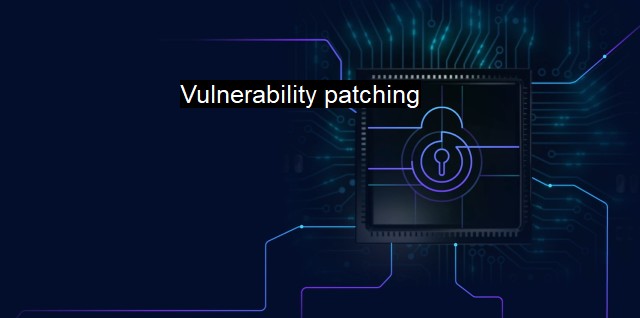What is Vulnerability patching?
The Importance of Vulnerability Patching for Strong Cybersecurity and Enhanced Antivirus Protection in Today's Digital Landscape
Vulnerability patching is a crucial process in the realm of cybersecurity and is fundamental to ensuring network safety. Put simply, vulnerability patching is the process of identifying, classifying, rectifying, and addressing vulnerabilities in a digital environment. It could be as simple as updating an outdated software or as complex as reconfiguring an entire system. Either way, it acts as an integral layer to the shield protecting digital information systems.To delve deeper, a vulnerability in this context is a flaw, bug, or weakness in a system or software that could be exploited by an attacker to penetrate a network and gain unauthorized access to it. Vulnerabilities can lie in different parts of a system such as system features, software, date/time conditions, maintenance loopholes, and system configurations. If detected and exploited by an attacker, vulnerabilities could lead to unauthorized disclosures, data breaches, loss of confidentiality, integrity, or availability of data, and unauthorized modification of systems. Therefore, the identification and improvement of these vulnerabilities using patches form a significant part of cybersecurity defense strategies.
A patch to combat these vulnerabilities is a piece of software designed specially to address and mend these system flaws. These are small pieces of software added to an installed program or part of an operating system to aid in fixing the vulnerability by either repairing the issue or enhancing the software. Patches are commonly released by software developers once they become aware of a vulnerability within their software, often through third-party penetration testing or user feedback. Along with bug fixing, patches are equally crucial as they improve security, add features, and enhance the performance of systems and software.
Alarmingly, the exploitation of vulnerabilities is a common strategy used by cyber attackers. Exploits are often packaged into malware or ransomware by attackers, leading to devastating attacks on both private and public systems. Therefore, to secure digital infrastructure and block these potential threats, vulnerabilities need to be patched or remedied promptly.
It’s pertinent to note that the patching process may not always be straightforward, and several challenges could be encountered. The complexity of systems and the variety of software used can make patch management an overwhelming task as every software requires its update procedures. Not all vendors notify users once they release patches, and sometimes patches may conflict with other software, triggering problems. These challenges can be mitigated by implementing automated patch management systems, which can identify and apply all relevant patches based on pre-set policies.
Good cybersecurity hygiene revolves around regular, effective vulnerability patching. Organizations must conduct routine vulnerability assessments to identify threats and prioritize patching workflows. Regular patching not only reduces the likelihood of a successful cyber-attack but can also contribute to better system functionality and improved latency.
Considering the rapidly evolving landscape of cybersecurity, regular patch management is absolutely vital. Undoubtedly, no system can be 100% secure and free from vulnerabilities—cyber threats always find ways to adapt and evolve. Still, consistent efforts towards vulnerability patching and robust patch management can make these digital systems and resources safer, and thus, prevent unauthorized access or loss of precious data.
One must beware that patching only fixes current issues, meaning merely applying patches would not be effective against novel threats. Hence, it should be supplemented with robust firewall settings, proper antivirus programs, anti-malware software, regular backups, and, most importantly, creating awareness among users.
Vulnerability patching is perhaps one of the most important tasks in digital security. It waits for no one and tolerates no delay. Every moment counts, as cyber-attackers are always looking for exposed vulnerabilities. Given its enormous significance vulnerability patching is not just a luxury– it is an imperative activity for every user and organization to secure their digital resources against escalating cyber threats ice.

Vulnerability patching FAQs
What is vulnerability patching?
Vulnerability patching refers to the process of fixing security weaknesses or vulnerabilities that exist in software, hardware or systems that may be exploited by malicious actors to gain unauthorized access or damage to them.Why is vulnerability patching important in cybersecurity?
Vulnerability patching is critical in cybersecurity since it helps to minimize the risk of cyberattacks and defend against malicious activities targeted at vulnerable systems. It ensures that systems are up-to-date and protected by the latest security software and patches, reducing the likelihood of breaches and data loss.How often should vulnerability patching be done?
Vulnerability patching should be performed regularly, preferably as soon as security patches are released by software vendors or security researchers. This ensures that any newly discovered vulnerabilities are addressed before they can be exploited by malicious actors. In some cases, organizations may conduct vulnerability scans regularly to identify any potential risks and patch them accordingly.What are the risks of not patching vulnerabilities?
Not patching vulnerabilities can result in serious security threats, such as data breaches, system failures, and loss of sensitive information. Vulnerabilities that remain unpatched can be exploited by cybercriminals, enabling them to gain unauthorized access to systems and steal sensitive data. Additionally, organizations that fail to patch vulnerabilities may be in violation of regulatory requirements, resulting in legal penalties, reputation damage, and financial losses.| | A | | | B | | | C | | | D | | | E | | | F | | | G | | | H | | | I | | | J | | | K | | | L | | | M | |
| | N | | | O | | | P | | | Q | | | R | | | S | | | T | | | U | | | V | | | W | | | X | | | Y | | | Z | |
| | 1 | | | 2 | | | 3 | | | 4 | | | 7 | | | 8 | | |||||||